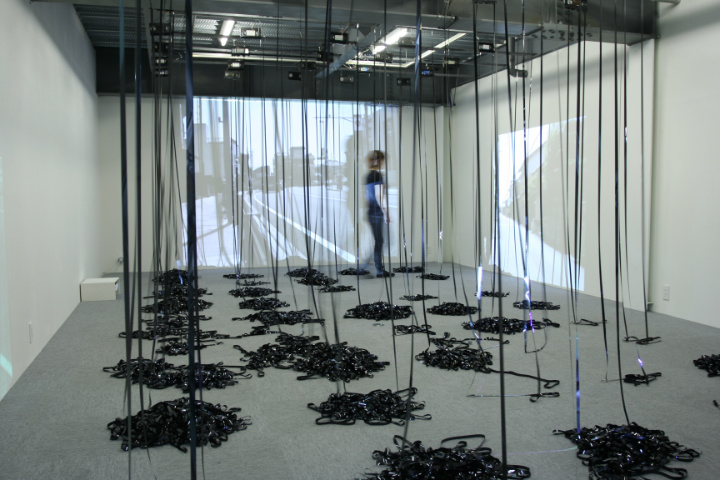|
<comment>
{\rtf1\ansi\ansicpg1252\deflang1041 {\fonttbl {\f0 Arial;}} {\colortbl;\red0\green0\blue0;\red255\green255\blue255;} \pard\plain\sa240 Videotapes have become a thing of the past, replaced by DVDs and Blu-ray recorders. These endless tapes, which are both a vast memory of the past and a visualization of time, have become one of the most annoying things that flood society today. \par Fifty cassettes set on the ceiling are driven by a low-speed motor that slowly ejects the tapes to the floor. The tapes project the scenery of three locations in Japan onto the wall. They are Oiso in Kanagawa Prefecture, Shono in Mie Prefecture, and Tsuchiyama in Shiga Prefecture, which are known for the rain scene in the 53 Stages of the Tokaido. \par The tape, which stretches in secret, reminds us of the uneasiness creeping into modern society, and its black rain spreads over the floor endlessly, as if to wash away the beautiful scenes of the prints. The tape, however, is programmed with coincidences at a certain point to determine whether it will continue to spin or reverse and go backward in time. It depends on the slight difference in the position of the magnet when the AC motor pauses. \par Everyone is already beginning to sense that the trend of mass consumption and its eventual mass destruction, which has been repeated in the name of modernization, has reached a point where it can no longer be tolerated. Various movements to stem the tide and to regenerate the environment are gaining prominence. However, in the midst of the vortex of social desires, it may be difficult to immediately correct this direction. Just as the flow of a tape of a work can be switched by the slightest difference in stance.\fs1\lang1024} |
|---|
Rain of theTime
video tapeALow-speed motorAicAprojector
h270~w500~700cm
Atsushi Natsuike Exhibition [Art Kageyama Gallery]
2011
